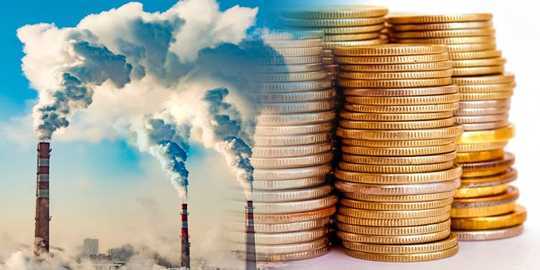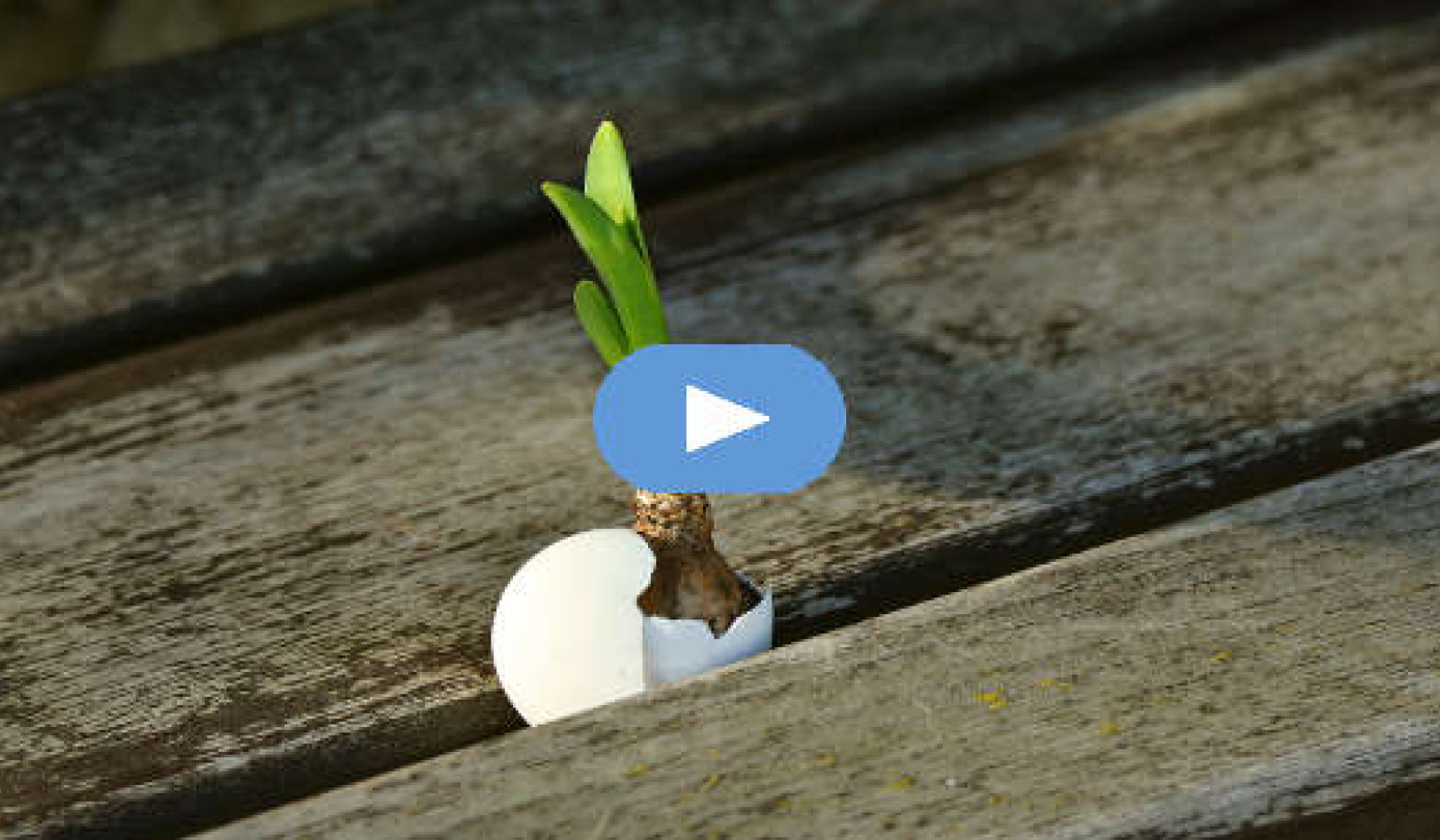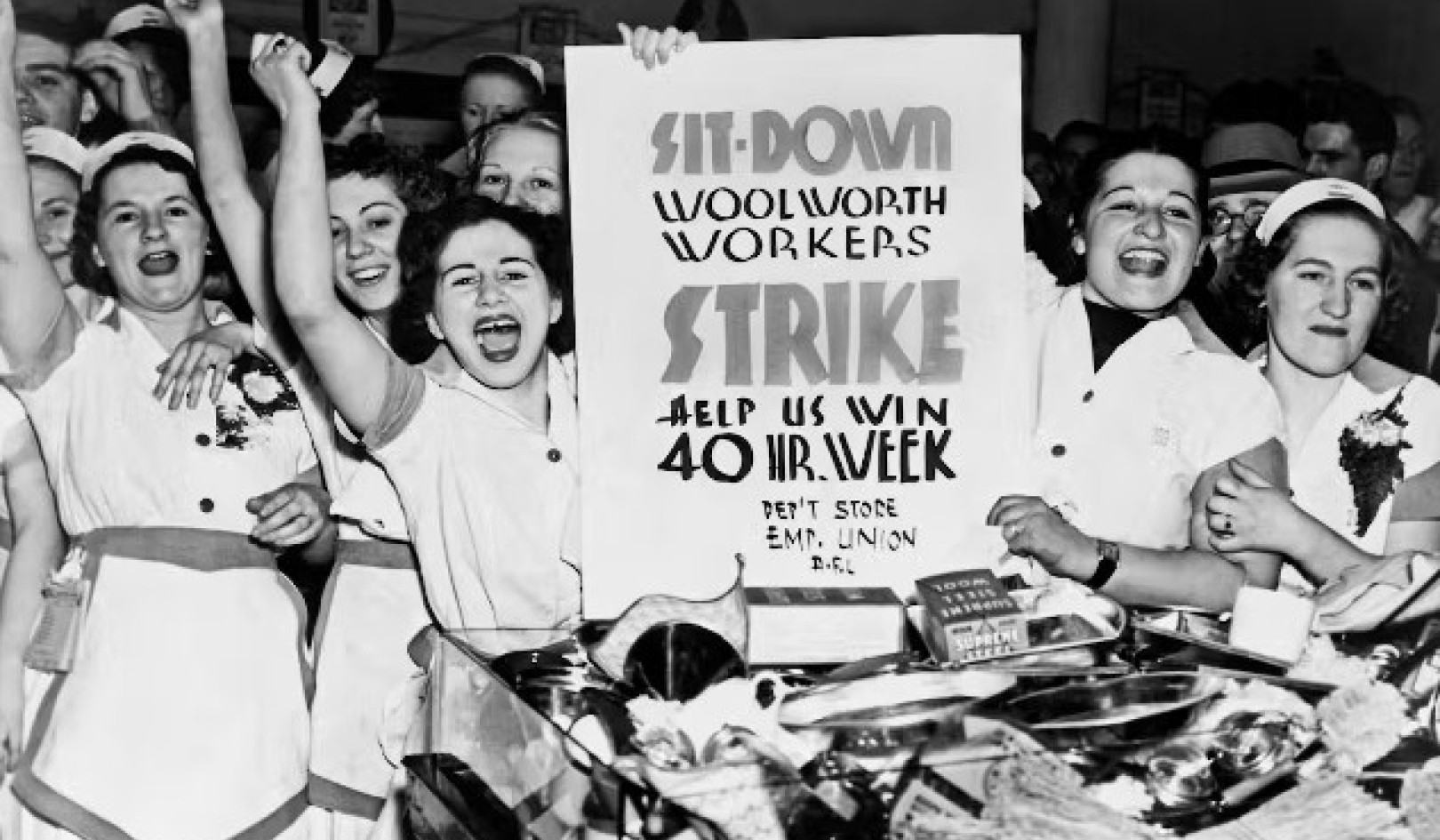It’s far easier to avoid burning fossil fuels than it is to clean up CO? emissions once they’re in the Earth’s atmosphere. But the world no longer has the luxury of choice – drastic emission reductions and rapid CO? removal and storage will both be necessary to avoid the worst impacts of global heating.
What if, instead of wasting all that CO?, it could be turned into something useful? There’s currently little economic incentive for industries that emit CO? to capture it, let alone to draw it directly down from the atmosphere. Identifying valuable products and how to make them might kickstart CO? removal on an industrial scale, and help bring down emissions in the process. In our recent paper, we set out to clarify what these processes and products might be.
We considered processes that use CO? captured from industrial emissions, and also biological processes that can directly draw down CO? from the air. We projected that between one and ten gigatonnes of CO? could be utilised per year by 2050, at costs of under USD$100 (£77) per tonne of CO?. Humans currently emit 37 gigatonnes of CO? a year, and we need to reduce our impact to net zero by around 2050. Some estimates suggest this might mean removing around ten gigatonnes of CO? a year from 2050 onward. Some of these ideas for using CO?, if implemented properly, could play a role in making that more economically viable.
Some ideas for using CO? might not get off the drawing board. But with the right investment and incentives, others may move from niche research projects into credible plans, and from the work of small businesses to the goal of entire industries. Here is a selection of the ways that one person’s pollution could become another’s product.
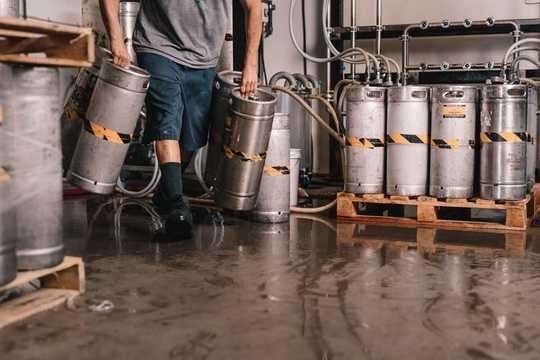 Creating a commodity out of carbon could help kickstart its removal from the atmosphere. Elevate on Unsplash/Shutterstock
Creating a commodity out of carbon could help kickstart its removal from the atmosphere. Elevate on Unsplash/Shutterstock
1. Make buildings
There are several ways in which buildings can be constructed with materials made from CO?. The first is obvious: use wood. Growing and sustainably harvesting trees for building means that CO? is taken from the atmosphere, converted into a valuable commercial product, and stored as carbon in long-lived buildings.
It also reduces demand for cement, which is responsible for 10-15% of global greenhouse gas emissions through its production. New technologies, such as cross-laminated timber or acetylated wood, are making this substitution ever easier.
The second way is to use and then store CO? in concrete-making processes, by curing cement or in the manufacture of other ingredients like aggregate.
2. Create plastic products
CO? can be used in polymers to make durable plastics for cars and buildings. Around 60% of plastics have applications in sectors other than packaging. Plastics made from CO? could displace plastic products made from fossil fuels for these sectors, particularly as they don’t require toxic or dirty ingredients such as phosgenes or epoxides, and can be cheaper to make than fossil-fuel based materials. Because the CO? molecule is a stable part of the backbone of the polymer, it can be stored in these materials for as long as they last.
3. Make fuel or fertilisers
CO? can be used as a feedstock for many chemical processes, with hundreds of potential end products, including hydrocarbon fuels and urea fertilisers.
Fuels made from CO? can exist in the form of methanol as well as more complex products like so-called synfuels. These fuels can often be blended or moved around using existing infrastructure like pipes and tankers. And although CO? fuels are currently very costly to manufacture, in the future they might be valuable in niches like aviation or long-distance shipping, which are more difficult to decarbonise than trains and cars because they need fuels with higher energy densities.
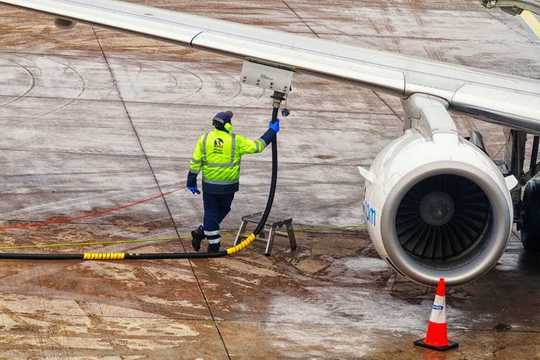 While it will be comparatively easy for cars and trains to undergo electrification, aeroplanes will still need liquid fuels with high energy densities for a while. Milosz Maslanka/Shutterstock
While it will be comparatively easy for cars and trains to undergo electrification, aeroplanes will still need liquid fuels with high energy densities for a while. Milosz Maslanka/Shutterstock
If the CO? product is a fuel or a fertiliser, the CO? ends up back in the atmosphere once used. While two uses of the carbon is better than one, if the carbon atom originally came from a fossil fuel, it’s not a long-term solution. To be climate neutral, the CO? feedstock will have to be sourced from the air – so the CO? is taken from the atmosphere, made into fuel, and then emitted back to the atmosphere. This is currently expensive and technically challenging. Crucially, the energy required for this process also needs to be renewable.
4. Increase crop yields
There’s emerging evidence that increasing the amount of carbon in soils can also increase crop yields. This is a natural form of CO? utilisation that already happens – scientists and farmers can just give it a helping hand. One particularly promising way is by using biochar – plant material that has been converted into a stable form of organic carbon via a process known as pyrolysis. Biochar buried in soils could store carbon for the long term and increase crop yields.
The general benefits of replenishing and maintaining carbon in the soil are well established, but using soil as a store of carbon is challenging because it is easily disturbed.
5. Extract more oil
Counter-intuitively, it’s possible to both produce oil and store CO?. That’s because injecting CO? into an oil well increases the amount of oil that can be recovered – so-called “CO? enhanced oil recovery”.
It is actually possible to operate the well so that more CO? is put into it than is emitted in the process of producing the oil and burning it. But policy changes would be needed to incentivise this – oil companies would not do it otherwise. And it’s a temporary fix. In a world that has fully decarbonised, demand for fossil oil should be close to zero.
Nonetheless, this could be a short-term way to stimulate much needed demand for CO? capture, as emitters could sell their waste CO? to oil producers.
All these options for using CO? have potential, but making them a reality will need a clear understanding of the possible unintended consequences. Many could be failures, so it’d be unwise to rely solely on any one of them, but instead, spread bets widely.![]()
About The Authors
Ella Adlen, Research and Programmes Manager, Oxford Martin School, University of Oxford and Cameron Hepburn, Professor of Environmental Economics, University of Oxford
This article is republished from The Conversation under a Creative Commons license. Read the original article.
Related Books
Drawdown: The Most Comprehensive Plan Ever Proposed to Reverse Global Warming
by Paul Hawken and Tom Steyer In the face of widespread fear and apathy, an international coalition of researchers, professionals, and scientists have come together to offer a set of realistic and bold solutions to climate change. One hundred techniques and practices are described here—some are well known; some you may have never heard of. They range from clean energy to educating girls in lower-income countries to land use practices that pull carbon out of the air. The solutions exist, are economically viable, and communities throughout the world are currently enacting them with skill and determination. Available On Amazon
In the face of widespread fear and apathy, an international coalition of researchers, professionals, and scientists have come together to offer a set of realistic and bold solutions to climate change. One hundred techniques and practices are described here—some are well known; some you may have never heard of. They range from clean energy to educating girls in lower-income countries to land use practices that pull carbon out of the air. The solutions exist, are economically viable, and communities throughout the world are currently enacting them with skill and determination. Available On Amazon
Designing Climate Solutions: A Policy Guide for Low-Carbon Energy
by Hal Harvey, Robbie Orvis, Jeffrey Rissman With the effects of climate change already upon us, the need to cut global greenhouse gas emissions is nothing less than urgent. It’s a daunting challenge, but the technologies and strategies to meet it exist today. A small set of energy policies, designed and implemented well, can put us on the path to a low carbon future. Energy systems are large and complex, so energy policy must be focused and cost-effective. One-size-fits-all approaches simply won’t get the job done. Policymakers need a clear, comprehensive resource that outlines the energy policies that will have the biggest impact on our climate future, and describes how to design these policies well. Available On Amazon
With the effects of climate change already upon us, the need to cut global greenhouse gas emissions is nothing less than urgent. It’s a daunting challenge, but the technologies and strategies to meet it exist today. A small set of energy policies, designed and implemented well, can put us on the path to a low carbon future. Energy systems are large and complex, so energy policy must be focused and cost-effective. One-size-fits-all approaches simply won’t get the job done. Policymakers need a clear, comprehensive resource that outlines the energy policies that will have the biggest impact on our climate future, and describes how to design these policies well. Available On Amazon
This Changes Everything: Capitalism vs. The Climate
by Naomi Klein In This Changes Everything Naomi Klein argues that climate change isn’t just another issue to be neatly filed between taxes and health care. It’s an alarm that calls us to fix an economic system that is already failing us in many ways. Klein meticulously builds the case for how massively reducing our greenhouse emissions is our best chance to simultaneously reduce gaping inequalities, re-imagine our broken democracies, and rebuild our gutted local economies. She exposes the ideological desperation of the climate-change deniers, the messianic delusions of the would-be geoengineers, and the tragic defeatism of too many mainstream green initiatives. And she demonstrates precisely why the market has not—and cannot—fix the climate crisis but will instead make things worse, with ever more extreme and ecologically damaging extraction methods, accompanied by rampant disaster capitalism. Available On Amazon
In This Changes Everything Naomi Klein argues that climate change isn’t just another issue to be neatly filed between taxes and health care. It’s an alarm that calls us to fix an economic system that is already failing us in many ways. Klein meticulously builds the case for how massively reducing our greenhouse emissions is our best chance to simultaneously reduce gaping inequalities, re-imagine our broken democracies, and rebuild our gutted local economies. She exposes the ideological desperation of the climate-change deniers, the messianic delusions of the would-be geoengineers, and the tragic defeatism of too many mainstream green initiatives. And she demonstrates precisely why the market has not—and cannot—fix the climate crisis but will instead make things worse, with ever more extreme and ecologically damaging extraction methods, accompanied by rampant disaster capitalism. Available On Amazon
From The Publisher:
Purchases on Amazon go to defray the cost of bringing you InnerSelf.comelf.com, MightyNatural.com, and ClimateImpactNews.com at no cost and without advertisers that track your browsing habits. Even if you click on a link but don't buy these selected products, anything else you buy in that same visit on Amazon pays us a small commission. There is no additional cost to you, so please contribute to the effort. You can also use this link to use to Amazon at any time so you can help support our efforts.


